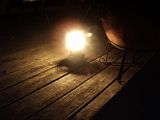GPS, geocaching
homebrewing
KF5RCA
Scanning
Ford Ranger
Preparedness
Coleman gear
Highland Terrace
Team Mousetrap
Resume
I recommend...


Get Linux!






[
preparation homepage |
72hr kit |
B.O.B. |
water |
everyday preparedness |
Coleman stoves and lanterns |
which SHTF stove? |
Preparedness simulations/scenarios |
kerosene lanterns |
canning
frs/gmrs radio
]
"You don't save grasshoppers by feeding them when winter comes;
you save grasshoppers by turning them into ants." -- Jack Spirko.
"When grasshoppers get hungry they turn into locusts." -- LdMorgan
 The blue flames! This hiss of the generator! Good stuff, Maynard. And made here the US if that kind of thing motivates you. And found on the cheap at many garage sales and craigslist.
The blue flames! This hiss of the generator! Good stuff, Maynard. And made here the US if that kind of thing motivates you. And found on the cheap at many garage sales and craigslist.
I have made a chart that might help you pick a stove for cooking in PAW/preparedness/SHTF scenarios. I also share with you the reasoning behind my own decisions.
 It is commonly said that any liquid-fuel Coleman that is not rusted out is worth rebuilding. Frequently all that is needed is fresh fuel. If the flame never settles down you might need a generator (the fuel pipe that is heated by the flames, that turns liquid fuel into vapors). If it does not hold pressure you might need a fuel cap, or might need to lubricate/replace the pump. That's usually all there is to it. Sometimes there are more exotic problems but they are the minority situation.
It is commonly said that any liquid-fuel Coleman that is not rusted out is worth rebuilding. Frequently all that is needed is fresh fuel. If the flame never settles down you might need a generator (the fuel pipe that is heated by the flames, that turns liquid fuel into vapors). If it does not hold pressure you might need a fuel cap, or might need to lubricate/replace the pump. That's usually all there is to it. Sometimes there are more exotic problems but they are the minority situation.
Dual fuel gear costs a bit more, but the tanks and valves
are different so they will withstand the additives in unleaded gasoline.
Dual fuel gear has a silver fount (fuel tank) rather than the usual green
or red. An exception to the silver fount == dual fuel rule
is the NorthStar series (like the 2000b
"sock-mantle" lantern) and lightweight Exponent series (like the
229 lantern. Note that some exponents are
multifuel; see below).
Common dual-fuelers include:
442 Feather stove,
eXponent Lantern (be aware it uses smaller
#20 mantles),
295 Lantern,
and the skeleton style Apollo stove.
Note: dual fuel gear running on unleaded can be smelly at lighting
and shutdown. It is said that lanterns smell unpleasant on unleaded
even while burning normally. Unleaded will foul generators faster than
coleman fuel. Depending on the cost of generators, coleman, and unleaded you'd have to burn about 3 gallons of unleaded
in a small stove/lantern to break even and up to 7 gallons of unleaded in larger stoves with more expensive generators.
Another note: 10%
ethanol blends are unacceptable as they are hard on the plastic/rubber
seals and the generator gas tips are sized for burning coleman/unleaded in
stoichiometrically
correct ratios. Exception: Coleman has made a few items, like
the 285A-710 E-Fuel lantern, that were built to handle 10% ethanol
unleaded. These units are immediately recognizable by their yellow fount
and ear-of-corn design on the label. (hat tip to Ken for pointing out
that not all 285A lanterns are ethanol safe).
Kerosene
Kerosene-specific gear is uncommon in the US Coleman line of products; kero lanterns have been somewhat more popular in Canada and you can still buy the
bulge-globe 639C
and
straight-globe 214C kero lanterns.
. In the rest of the world, (non-Coleman) kerosene lanterns and stoves dominate the market.
It is possible to modify some older lanterns to run kerosene; the 220 series is a good example. This is not a beginners' level project, and assumes you have access to cheap kero. In my neck of the woods kero costs almost 2x what coleman fuel does.
multifuel
The most common multifuel (coleman/unleaded/kerosene) gear is the
550B stove.
Notes about exponent stoves in the 550 family:
550: kero gen nut may be chrome, gas is brass.
550B: kero gen has cuts on nut edges, gas is smooth. Old
In all cases the kero gen will have a smaller gas tip orifice. More info here.
Coleman also makes skeleton-type multifuel (coleman/unleaded/kero or inverted butane/propane) Fyrestorm stoves in stainless steel and titanium/magnesium models. The Denali expedition stove adds jet fuel capability to that mix.
CallingMart.com. Discounted wireless refills. Instant PIN delivery.